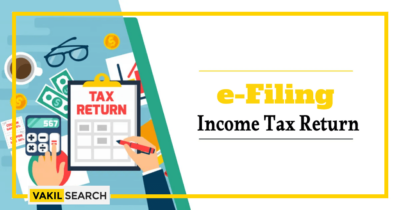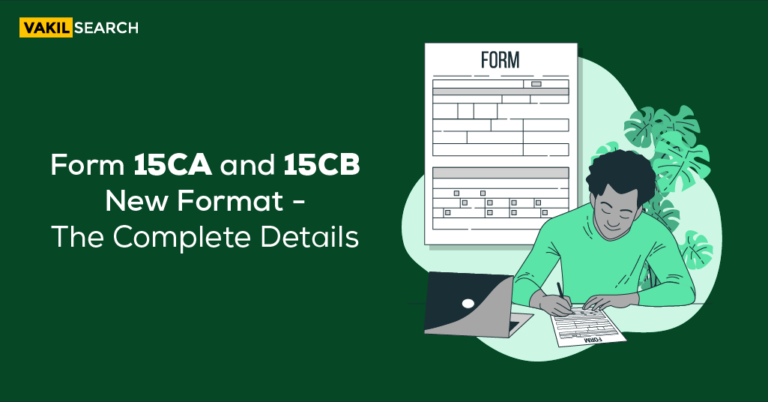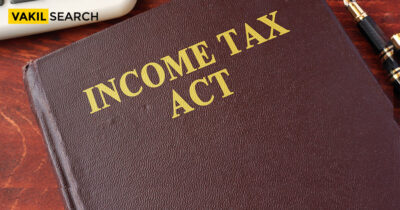The new budget of 2021 brought the new income tax rates. It has new exemptions and new rates. Let’s know about the income tax slabs and rates provided in the new financial year 2021-22.
Latest Update: 28 May 2023
Every year, the finance minister of India announces the Income Tax Slabs, determining the tax rates for various income brackets. In 2023, the finance minister Nirmala Sitharaman presented the Union Budget on 1 February 2023, revealing the updated income tax structure. The latest budget introduced certain modifications to the existing tax slabs.
Currently, two tax regimes are available, namely the new regime and the old regime, offering taxpayers the opportunity to avail of tax benefits.
As part of the changes in the new tax regime, the finance minister announced an increased rebate for income tax, raising the limit from ₹5 lahks to ₹7 lahks. Additionally, adjustments were made to the Income Tax Slabs in the new regime. Furthermore, the surcharge rate for individuals earning ₹5 crores and above has been reduced from 37% to 25%.
What is an Income Tax Slab?
The Income Tax Slab refers to the system in which individual taxpayers are required to pay income tax based on the specific slab they fall into. The Income Tax Slabs an individual belongs to depends on their income, and as a result, those with higher incomes are subject to higher tax payments. The introduction of the slab system aims to establish a fair tax structure within the country. It’s worth noting that the slabs are subject to change with each budget announcement.
Income Tax Slabs in India
According to their income and what tax they should pay, as per the taxation laws, the grouping of taxpayers is called the Income Tax Slab. These income tax slabs help decide the income tax rates levied on a person and who is entitled to tax exemption.
These exemptions are made by considering a person’s age and state of income. According to the slab, there are three kinds of people, i.e. residents and non-residents aged less than 60, senior citizens aged between 60 to 80, and super senior citizens aged more than 80.
New Income Tax Slabs for FY 2022-23 (AY 2023-24)
|
Income Tax Slabs |
Income Tax Rate |
| Up to Rs.3 lakh | Nil |
| Rs.3 lakh – Rs.6 lakh | 5% |
| Rs.6 lakh – Rs.9 lakh | 10% |
| Rs.9 lakh – Rs.12 lakh | 15% |
| Rs.12 lakh – Rs.15 lakh | 20% |
| Above Rs.15 lakh | 30% |
Note:
- The option to choose the new regime can be exercised on or before the specified date for each previous year, provided you, as an individual or a member of a Hindu Undivided Family (HUF), do not have any business income.
- Once you select the new Income Tax Slabs regime as your option, you are not allowed to change it within the same year. However, if you withdraw your option for the new tax regime and revert to the old regime, you can opt for the new regime again during the financial year if desired.
Comparison Between FY 2022-23 (AY 2023-24) for New Tax Regime
|
Income Tax Rates |
FY 2022-23 Income Tax Slabs |
AY 2023-24 Income Tax Slabs |
| NIL | Rs.0 – Rs.2.5 lakh | Rs.0 – Rs.3 lakh |
| 5% | Rs.2.5 lakh – Rs.5 lakh | Rs.3 lakh – Rs.6 lakh |
| 10% | Rs.5 lakh – Rs.7.5 lakh | Rs.6 lakh – Rs.9 lakh |
| 15% | Rs.7.5 lakh – Rs.10 lakh | Rs.9 lakh – Rs.12 lakh |
| 20% | Rs.10 lakh – Rs.12.5 lakh | Rs.12 lakh – Rs.15 lakh |
| 25% | Rs.12.5 lakh – Rs.15 lakh | – |
| 30% | Above Rs. 15 lakhs | Above Rs. 15 lakh |
Note: It is important to note that in the new tax regime, the rebate for income tax has been raised from the previous limit of up to Rs. 5 lakh to Rs. 7 lakh.
Income Tax Slabs & Rates as Per Old Regime AY 2023-24
|
Income Tax Slab |
Tax Rate |
| Up to Rs.2.5 lakh | Nil |
| Above Rs.2.50 lakh – Rs.5.00 lakh | 5% of the total income that is more than Rs.2.5 lakh + 4% cess |
| Above Rs.5 lakh – Rs.10 lakh | 20% of the total income that is more than Rs.5 lakh + Rs.12,500 + 4% cess |
| Above Rs.10 lakh | 30% of the total income that is more than Rs.10 lakh + Rs.1,12,500 + 4% cess |
Income Tax Slabs Between 60-80 years (Senior Citizen)
| Income Slab (in Rs.) | Income Tax Rate |
| Up to Rs. 3,00,000 | Nil |
| 3,00,001 to 5,00,000 | 5% of income over Rs. 3,00,000 |
| 5,00,001 to 10,00,000 | Rs. 10,000 + 20% of income over Rs. 5,00,000 |
| Above 10,00,000 | Rs. 1,10,000 + 30% of income over Rs. 10,00,000 |
Income Tax Slabs for Individuals above 80 years (Super Senior Citizen)
| Income Tax Slab For Super Senior Citizen FY 2022-23 | Income Tax Rate |
| Up to Rs. 5,00,000 | Nil |
| Rs. 5,00,001 to Rs. 10,00,000 | 20% of income over Rs. 5,00,000 |
| Above Rs. 10,00,000 | Rs. 1,00,000 + 30% of income over Rs. 10,00,000 |
Surcharge Rates Applicable to Income Tax
| Net Taxable Income Limit | Surcharge Rate on the Amount of Income Tax |
| Less than Rs 50 lakhs | Nil |
| More than Rs 50 lakhs ≤ Rs 1 Crore | 10% |
| More than Rs 1 Crore ≤ Rs 2 Crore | 15% |
| More than Rs 2 Crore ≤ Rs 5 Crore | 25% |
| More than Rs 5 Crore | 37%* |
New Income Tax Slabs Rates for Domestic Companies
|
Base Tax Rate |
Surcharge Applicable | Cess |
Effective Tax Rate |
| 22% | 10% | 4% | 25.168% |
Income Tax Slabs 2021-22 and 2022-23
A person’s income in the financial year of 2021-2022 decides what tax he will pay to file income tax returns in the assessment year. The financial year and assessment year starts on 1 April and ends on 31 March.
Every earning individual needs to pay income tax as per the Income Tax Slabs, and rates. Paying taxes is not only limited to single individuals; every person involved in a Hindu Undivided Family, partnership firms, corporates, small businesses, and LLPs is entitled to pay tax. The income tax Act provides different tax rates for different categories or slabs supplied to the public every year.
The current budget for 2023 brought no changes to the previous income tax bracket. This is the new Income Tax Slab Rate for FY 2021-2022.
| Income Tax Slabs | Income Tax Rate |
| Upto 2,50,000 Rs yearly | Exempted |
| 2,50,000- 5,00,000 Rs | 5% tax to be paid on income exceeding the maximum |
| 5,00,000 – 7,50,000 RS | 10% tax to be paid on income exceeding the maximum + 12,500 |
| 7,50,000 – 10,00,000 | 15% tax to be paid on income exceeding the maximum + 37,500 |
| 10,00,000 – 12,50,000 | 20% tax to be paid on income exceeding the maximum + 75,000 |
| 12,50,000 – 15,00,000 | 25% tax to be paid on income exceeding the maximum 1,25,000 |
| More than 15,00,000 | 30% tax to be paid on income exceeding the maximum 1,87,500 |
- The new regime Income Tax Slabs remains unchanged regarding the exception limit for all tax-paying citizens and binds everyone irrespective of age.
- A person whose total annual income doesn’t exceed 5 lakhs can benefit from tax exemption. This exemption is described under section 87A of The income tax act. No money needs to be deposited for income under 5 lakhs annually. It is important to know about these sections like Section 80DD to file ITR properly
- Whereas the tax exemption limit for NRIs is within 2.5 lakhs net annual income, irrespective of any age.
- An additional health and education cess of 4% gets added to the income tax liability with the provided tax rate. Cess is the additional taxes that must be paid; it is the tax levied on another tax.
- Also, an additional surcharge gets added as per the tax rate mentioned in the slabs.
- If your total annual income doesn’t exceed more than 5 lakhs, you have to pay 5% of income tax.
- If the annual income exceeds 5 lakhs and remains less than 7.5 lakhs, the total payable income tax will be 10%.
- A 15% of income tax must be paid in the case where the total income exceeds 7.5 lakhs per annum and lies under 10 lakhs.
- If the total annual income of a person remains between 10 lakhs and 12.5 lakhs, the payable income tax will be 20%.
- If the total income of an Assessee in Income Tax remains between 12.5 lakhs and 15 lakhs, the imposed income tax will be 25%.
- In the case where the income of a person exceeds 15 lakhs, the imposed tax rate shall be 30%.
- In order to explain the Surcharge levied on some income rates, other slabs are provided too.
- If the income range stays between 50 lakhs to 1 crore, a 10% surcharge shall be imposed.
- If the range of income stays between 1 crore to 2 crores, a 15% surcharge shall be imposed.
- If the income range stays between 2 crores to 5 crores, a 25% surcharge shall be imposed.
- As proposed in Budget 2022, the Surcharge on income under section 112 shall be a maximum of 15% on the transfer of any capital asset. Other long-term capital gains can arise a graded Surcharge of 37%.
- An individual whose annual income does not exceed 5 lakhs can avail rebate under section 87A of the Income-tax Act. Before calculating the education cess, this rebate is deducted from it. The amount of the rebate can be 100% of income tax or Rs. 12,500, whichever is less.
- The cess and Surcharge remain variable according to the position of the taxpayer. HUF, domestic companies, partnerships, local authorities, and foreign companies pay different cess and surcharge values in addition to the income tax levied upon them.
How to Calculate Income Tax?
Before Filing income tax returns, one needs to understand what slab he is in and what taxable income he does. Taxable income is an income that attracts income tax on it. If you are not under the no tax to be paid slab, you need to calculate what amount of tax you need to pay. A person’s income consists of a basic salary, transport allowance, special allowance, and house rent allowance.
- The medical and telephone reimbursement gets exempted from income tax. If a person earns 6 lakhs rupees per annum as his basic salary, it becomes taxable. If the house rent allowance is 3 lakhs per annum, 1.8 lakhs will be exempted, and the taxable amount will be 1.2 lakhs.
- If the transport allowance is 96,000 per annum, 19,200 will be deducted, and the payable amount will be 76,800.
- There is no exemption on special allowance, so the same will remain; in this case, let’s take 60,000.
- If the leave travel allowance is 20,000 per annum, 12,000 will be exempted to make it 8,000.
- The total taxable income to be paid tax on will be 8,64,800 now.
- More than 8 lakhs taxable income attracts a 20% income tax rate. So the final tax will be the exact 20% of the total taxable income.
New Regime Income Tax Slabs Rates
In the new regime of income tax slab rates, many tax exemptions are not allowed, like house rent allowance, leave travel allowance, relocation allowance, daily expenses in the course of employment, special allowance, children’s education allowance, and interest on the house loan. The new income tax rates are equally imposed on everyone irrespective of their seniority.
Deductions and Exemptions under New Tax Regime
Certain deductions and exemptions that existed under the previous tax regime will no longer be available under the new tax regime. Around 70 deductions and exemptions available under the old tax regime will no longer be available under the new tax regime. The following are some of the common deductions that are and are not permitted under the new tax regime:
| Deductions that are Allowed |
|
| Deductions that are Not Allowed |
|
Example of How Income Tax is Calculated under Old Regime for 3 Individuals (A, B, and C)
Given below is an Example of How Income Tax is Calculated for 3 individuals (A, B, C):
-
For A (Income: Rs. 5,00,000)
- Annual Salary: Rs. 5,00,000
- Standard Deduction: Rs. 50,000
- Tax deductions under Section 80C: Rs. 70,000
- House Rent Allowance deductions: Rs. 82,000
- Gross total income after deductions: Rs. 3,98,000
-
-
Based on the Income Slab:
- Up to Rs. 2.5 lakh: Nil
- From Rs. 2,50,001 to Rs. 5 lakh: Rs. 1,900
- From Rs. 5,00,001 to Rs. 10 lakh: Nil
- Above Rs. 10 lakh: Nil
- Total Tax: Rs. 1,900
- Deductions under Section 87A: Rs. 1,900
- Additions of cess: Nil
- Total tax payable: Rs. Nil
-
-
For B (Income: Rs. 10,00,000)
-
- – Annual Salary: Rs. 10,00,000
- – Standard Deduction: Rs. 50,000
- – Tax deductions under Section 80C: Rs. 1,50,000
- – House Rent Allowance deductions: Rs. 90,000
- – Gross total income after deductions: Rs. 9,10,000
-
-
Based on the income slab:
- Up to Rs. 2.5 lakh: Nil
- From Rs. 2,50,001 to Rs. 5 lakh: Rs. 12,500
- From Rs. 5,00,001 to Rs. 10 lakh: Rs. 40,000
- Above Rs. 10 lakh: Nil
- Total Tax: Rs. 52,500
- Deductions under Section 87A: Nil
- Additions of cess: Rs. 2,100
- Total tax payable: Rs. 54,600
-
-
-
For C (Income: Rs. 15,00,000)
- Annual Salary: Rs. 15,00,000
- Standard Deduction: Rs. 50,000
- Tax deductions under Section 80C: Rs. 1,50,000
- House Rent Allowance deductions: Rs. 1,40,000
- Gross total income after deductions: Rs. 14,60,000
-
Based on the Income Slab:
- Up to Rs. 2.5 lakh: Nil
- From Rs. 2,50,001 to Rs. 5 lakh: Rs. 12,500
- From Rs. 5,00,001 to Rs. 10 lakh: Rs. 1,00,000
- Above Rs. 10 lakh: Rs. 45,000
- Total Tax: Rs. 1,57,500
- Deductions under Section 87A: Nil
- Additions of cess: Rs. 6,300
- Total tax payable: Rs. 1,63,800
Example of How Income Tax is Calculated under New Regime for 3 individuals (A, B, and C)
For Annual Salary:
A: Rs. 5,00,000
B: Rs. 10,00,000
C: Rs. 15,00,000
Standard Deduction:
A: Rs. 50,000
B: Rs. 50,000
C: Rs. 50,000
Tax Deductions under Section 80C:
A: Rs. 70,000
B: Rs. 1,50,000
C: Rs. 1,50,000
House Rent Allowance Deductions:
A: Rs. 82,000
B: Rs. 90,000
C: Rs. 1,40,000
Gross Total Income after Deductions:
A: Rs. 2,88,000
B: Rs. 7,00,000
C: Rs. 11,50,000
Computation of Tax on Gross Total Income:
Up to Rs. 5 lakh:
– A: Nil
– B: Nil
– C: Nil
From Rs. 5,00,001 to Rs. 10 lakh:
– A: Rs. 40,000
– B: Rs. 1,00,000
– C: Nil
Above Rs. 10 lakh:
– A: Rs. 45,000
– B: Nil
– C: Nil
Total Tax:
A: Nil
B: Rs. 40,000
C: Rs. 1,45,000
Deductions under Section 87A:
A: Nil
B: Nil
C: Nil
Additions of Cess:
A: Nil
B: Rs. 1,600
C: Rs. 5,800
Total Tax Payable:
A: Nil
B: Rs. 41,600
C: Rs. 1,50,800
For Domestic Companies, The Tax-Slabs Depends on Turnover as Mentioned Below
| Turnover | Tax Rate |
| Gross turnover of Rs.250 crore for the previous year | 25% |
| Gross turnover is more than Rs.250 for the previous year | 30% |
Time to choose New Regime or Old Regime
The new tax regime is particularly advantageous for middle-class taxpayers with a taxable income of up to Rs. 15 lakh. On the other hand, the old regime is more favorable for high-income earners.
The new tax regime proves beneficial for individuals who make minimal investments. With its lower-income tax slabs, taxpayers who do not claim tax deductions can enjoy the advantage of paying a reduced tax rate. For instance, if an individual’s total income before deductions is up to Rs. 12 lakh and they have investments below Rs. 1.91 lakh, they may face higher tax liability under the old system. Therefore, for individuals who invest less in tax-saving schemes, opting for the new regime is more beneficial.
However, for those who already have a financial plan in place that involves investments in tax-saving instruments, medical and life insurance premiums, tuition fees payments, education loan EMIs, home loans, etc., the old regime provides higher tax deductions and lower overall tax payments.
Given these considerations and the introduction of the new income tax regime, taxpayers should evaluate both regimes and conduct a comparative analysis. The choice between the two depends on individual circumstances and financial goals. It is advisable to assess the personal benefits under each regime before making a decision.
New Tax Slab Rates for Domestic Companies
The tax rates under the old and new regimes for companies are as follows:
Old Regime Tax Rates
– Company chooses section 115BAB and is registered on or after 1 October 2019 and has commenced manufacturing on or before 31 March 2023: Nil
– Company chooses Section 115BAA, wherein the total income of a company has been calculated without claiming specified deductions, incentives, exemptions, and additional depreciation: Nil
– Company chooses section 115BA and is registered on or after 1 March 2016 and engaged in the manufacture of any item without claiming specified deductions: 25%
– If a company’s turnover is less than Rs. 400 crore in the previous year 2018-19: 25%
– Any other domestic company: 30%
New Regime Tax Rates
– Company chooses section 115BAB and is registered on or after 1 October 2019 and has commenced manufacturing on or before 31 March 2023: 15%
– Company chooses Section 115BAA, wherein the total income of a company has been calculated without claiming specified deductions, incentives, exemptions, and additional depreciation: 22%
– Company chooses section 115BA and is registered on or after 1 March 2016 and engaged in the manufacture of any item without claiming specified deductions: 25%
– If a company’s turnover is less than Rs. 400 crore in the previous year 2018-19: 25%
– Any other domestic company: 30%
Current Surcharge Rates for Different Taxpayers
| Individual Taxpayers |
*The highest surcharge rate of 37% has been reduced to 25% under the new tax regime. |
| Companies |
|
| Partnership firm or LLP | 12% Surcharge is levied in income is more than Rs 1 crore |
What Deductions and Exemptions are Allowed Under the New Tax Regime?
The following deductions and exemptions are allowed under the new regime
- Travelling allowance in the case of transfer or for employment
- Apart from additional depreciation, other deductions under Section 32
- Deduction under Section 80JJAA for new employees (employment)
- Any investments that are made in the Notified Pension Scheme (Section 80CCD(2))
- Any conveyance allowance due to work travel
- Specially abled individuals will be provided transport allowance
Conclusion
To be a responsible citizen, a person must do his legal duty by filing an income tax return each year. Income taxes are levied on both personal wages and income generated by businesses. Non-payment of Income Tax Slabs can put you in grave liabilities.
FAQs on Income Tax Slabs
Do I need to file an Income Tax Return if my annual income is below Rs.3 lakh?
You are not required to file an Income Tax Return (ITR) if your annual income is below Rs.3 lakh under the new regime. However, it is advisable to file a Nil Return for record-keeping purposes. This can serve as proof of employment in various situations, such as when applying for a loan or passport.
Does family pension come under salary income during taxation?
No, family pension is not considered as salary income for taxation purposes. It is categorized as income from other sources for taxation.
Who can claim a rebate under Section 87A?
A rebate under Section 87A can be claimed by resident Indians whose total annual income is up to Rs.7 lakh, as per the new regime.
Will my income be taxed if I am an agriculturist?
Income generated from agriculture or allied activities is not subject to taxation. However, it is considered for rate purposes when calculating taxes on any non-agricultural income an individual may have.
Is income up to Rs.5 lakh tax-free?
No, income up to Rs.5 lakh is not tax-free. However, individuals earning income up to Rs.3 lakh under the new regime are exempt from income tax.
Can I switch the Income Tax regime for my tax filing?
Yes, you have the option to choose between the old and new tax regimes for filing your income tax returns based on your preference and eligibility.
Are the income tax slabs in India subject to change?
Yes, the income tax slabs in India can be subject to changes that are proposed by the Finance Ministry.
Who makes changes to the income tax slabs in India?
Changes to the income tax slabs in India are proposed by the Finance Ministry of India.
When are the changes to the income tax slabs in India proposed?
Changes to the income tax slabs in India are usually announced by the finance minister during the annual budget presentation, which takes place in February.
Will there be any standard deductions for the financial year 2023-2024?
Yes, for the financial year 2023-2024, there will be a standard deduction of Rs.50,000.
Will there be different tax slabs for various categories?
Tax slabs can vary based on the income and age of the individual. Different categories of taxpayers may fall under different tax slabs.










